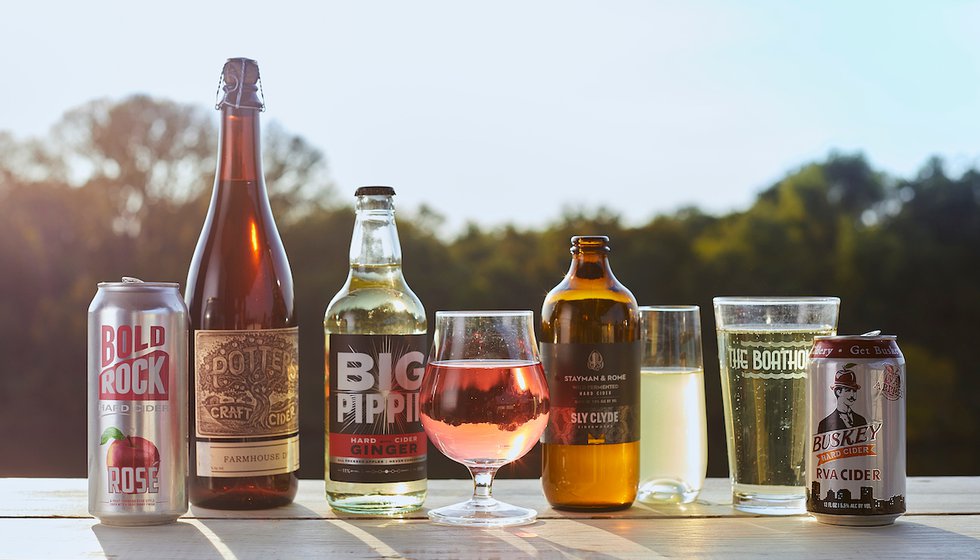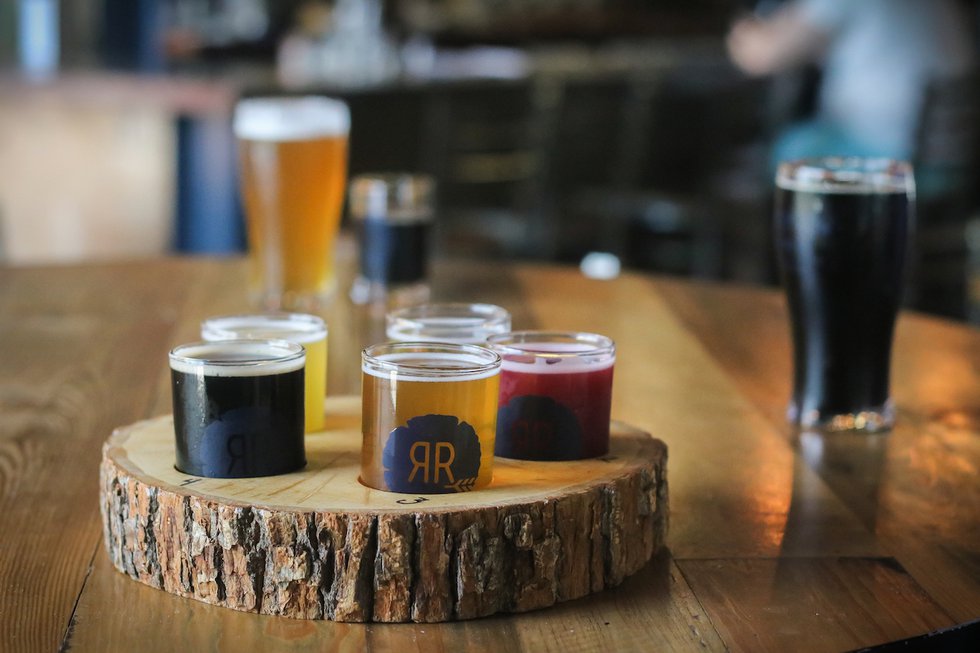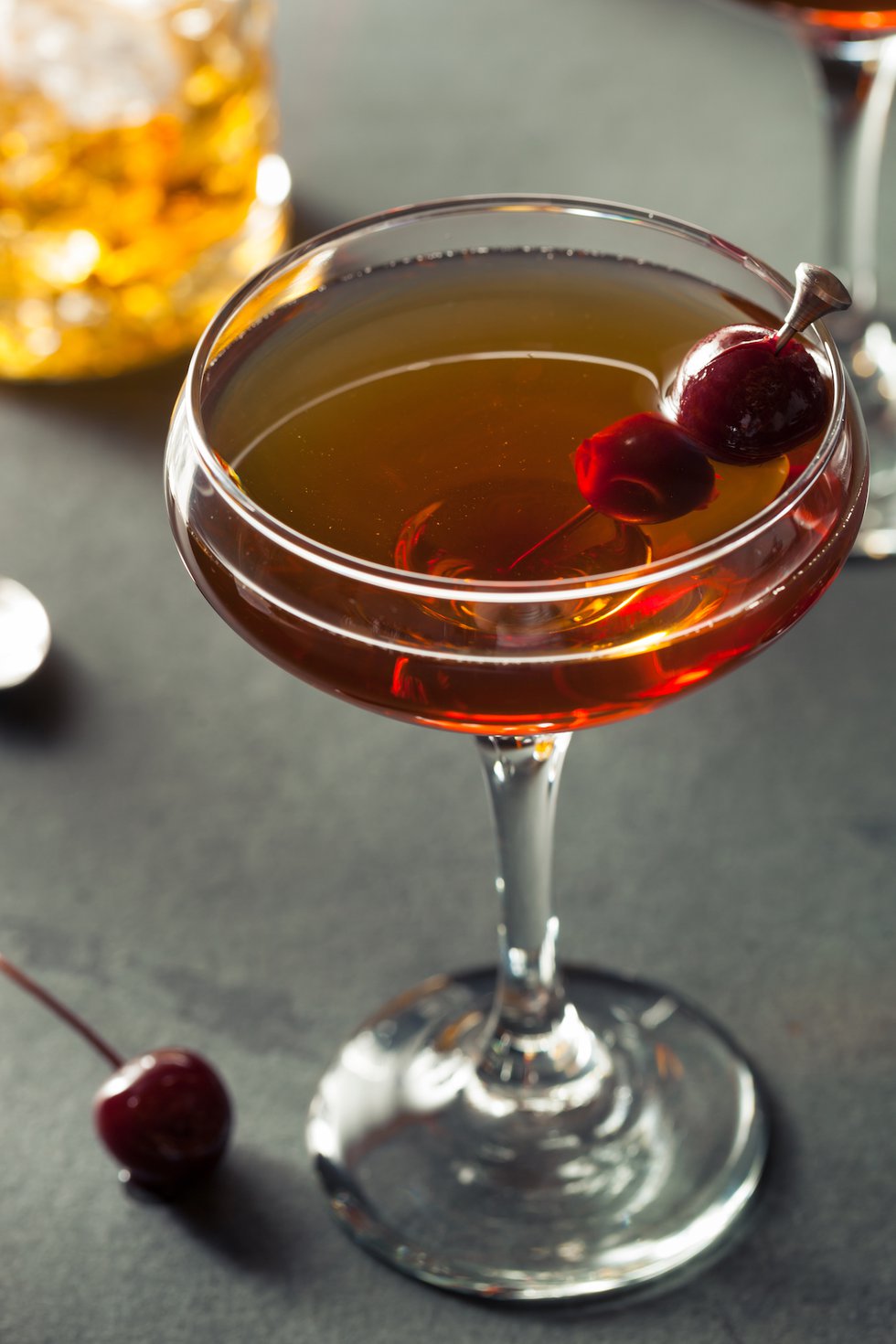
A selection of some of the fine ciders from Virginia.
Craft cider can be sweet or dry. Clues on the label will tell you what’s inside.
Hard cider has enjoyed a creative renaissance over the past 10 to 15 years. There is now an astonishing array of styles, from dry wine-like ciders to beer- and cocktail-inspired infusions—even ciders fortified with spirits. On your next shopping expedition, eschew the big-box grocery and instead visit a local independent bottle shop (they’re like record stores, but for alcohol). There you’ll find cider in big and little bottles, cans, and varying sweetness levels and infusions. It can be overwhelming. Here are some helpful cues.
Dry or sweet?
Alcoholic ciders are produced like white wine, just using apples instead of grapes. The apple juice is fermented with yeast, which converts the sugars in the juice into alcohol. A “dry” cider means that the yeast has eaten all of the sugars, resulting in a cider low on sweetness and focused on the flavor of the fruit (or infusions). “Sweet” ciders may be fermented to dry, but are typically finished with a sweetening agent (sugar, apple juice, honey) to raise the final residual sugar.
Unfortunately, cider labels don’t always display residual sugar percentages or a “sweet-o-meter” to indicate whether the beverage skews sweet or dry. But the packaging and label wording will provide guidance. Artisanal ciders, sometimes referred to as “cider-wines,” are packaged in wine bottles (500ml/750ml) and often taste like a dry white wine or champagne. Their production salutes cider’s colonial-era heyday: ingredient-driven with a focus on cider-specific apples, fermented slowly with no water involved, resulting in a final ABV (alcohol by volume) above 7.0 percent.
Artisanal cider labels may specify “Never from concentrate” and refer to acidity, tannin, and heirloom cider apple varieties. Bonus points if you’ve never heard of these apple varieties, as familiar eating apples are not optimal for cider production. For example, Red Delicious apple juice absolutely can be fermented, but the cider it produces will be light in color, flavor, and complexity. A Hewe’s Crab, by comparison, produces deep color; potent aroma; a rich, fruit-forward flavor profile to balance the acidity and tannin; and a lingering finish.
But be sure to look beyond the big bottles, as artisanal ciders have recently started appearing in multi-packs, typically cans. This style is often 6-7 percent ABV, with an apple-based “flagship” alongside variants that feature infusions of other fruits and flavors in a tantalizing range of tastes. If you prefer dry beverages, look for references to “0 grams of sugar” or “0 grams of carbs” on the can.
ABV offers another helpful clue, especially since ciders under 7.0 percent ABV are governed by different label guidelines. Those lower alcohol ciders must provide a more detailed description of their ingredients and nutritional information—including sugar content—on the label. For a sweeter palate, many “six-pack ciders” (sometimes called cider-beers) include 9-24 grams of sugar per 12-ounce bottle, at a more sessionable 4-5 percent ABV. These ciders are generally a blend of apple concentrate and water fermented for a shorter time—more like a wine cooler than a wine. They are more widely distributed and include commonly known national brands. These ciders are also very consistent from batch to batch, whereas the artisan style is more dependent upon Mother Nature and can vary wildly between vintages. Of course, there is no “better or worse” when it comes to sweetness levels, ABV, infusions, or styles. Drink what you enjoy!
Tasting Notes
Focusing solely on apples would be a disservice to contemporary cider, a craft rife with innovation. You may find ciders fermented spontaneously from natural yeast strains; hops, hibiscus, and ginger; infusions of cherries, berries, or wild foraged fruits; cysers, which blend apple juice and honey for co-fermentation; wine/cider hybrids with grapes and apples; even ciders fortified with warming fruit brandy that push 20 percent ABV. No matter the palate, there’s a cider for it.
Serve most cider chilled to refrigerator temperature. (Fortified dessert ciders are better at room temperature.) Pour the cider into a wine glass or tulip goblet to unlock the aromas, which supplement the flavors, and release some carbon dioxide (better into the air than into your belly). The initial sip serves as a palate warmup, so keep going. The subsequent mouthfuls will reveal the unique traits of each cider, which often include aroma and flavor notes that have nothing to do with apple: citrus, pineapple, grape, melon, banana, honeysuckle, rose, vanilla, butterscotch, and many more. A cider may even taste different on the tip of the tongue than it does in the middle, and different still on the finish.
Food Pairings
Cider is very versatile. Cheese and charcuterie are splendid accompanists to almost any cider. Couple a tart, tannic cider with salty fare like Virginia ham, just as the American colonists did. The citrus notes in hopped ciders work beautifully with seafood, sushi, and Asian cuisine; berry-infused ciders complement cheesecake and chocolates. Fortified ciders love a good cigar and drizzle magnificently over ice cream or cobbler.

This article originally appeared in our October 2020 issue.








